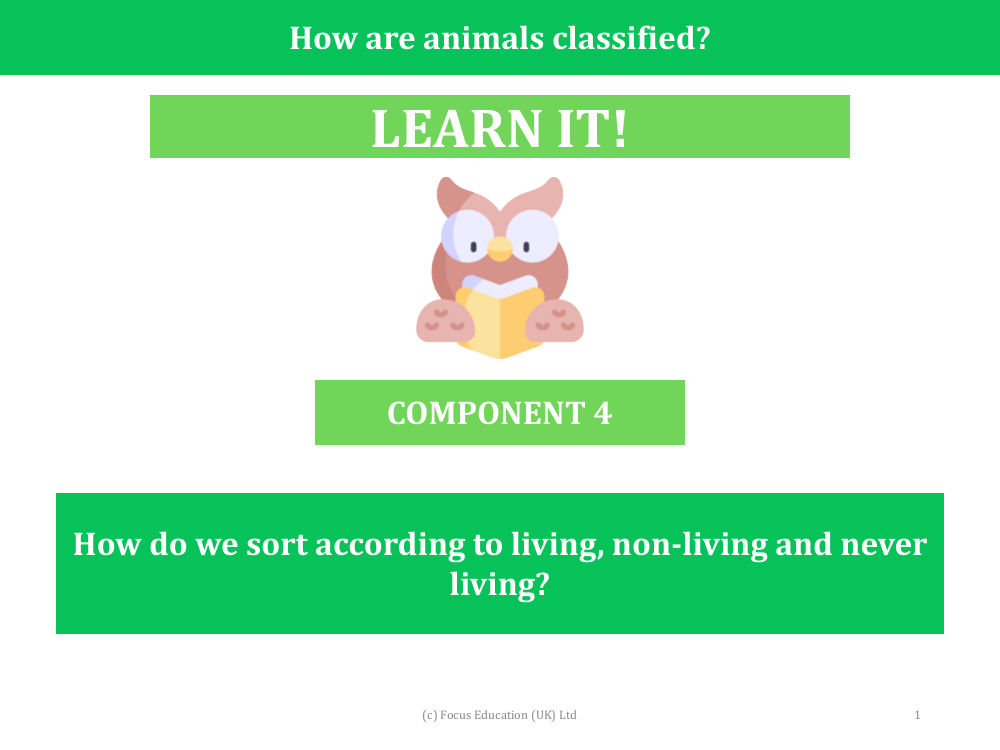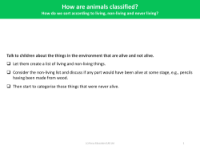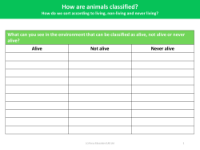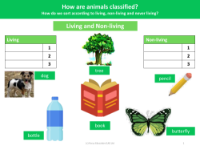How do we sort according to live, non-living and never living? - Presentation

Science Resource Description
In an educational presentation, children are guided through the process of understanding the differences between living, non-living, and never living items in their environment. They are encouraged to actively participate by creating lists to categorise items into these three distinct groups. For example, they may list dogs, trees, and butterflies as living, while objects such as bottles, books, and pencils are initially placed in the non-living category. Further discussion prompts children to consider whether any non-living items were once part of something living, like pencils that are made from wood, and to then separate those from items that were never alive.
The presentation is structured to help children visually sort and classify items they observe around them. They are prompted to identify items that fit into each category, with examples provided to illustrate the concept. A dog and a tree, for example, are classified as living, while a bottle, which is non-living, and a book, which is never alive, help to clarify the distinctions. Through this interactive approach, children learn to assess and categorise elements of their environment according to their living status, enhancing their understanding of the natural world and the classification of objects within it.



